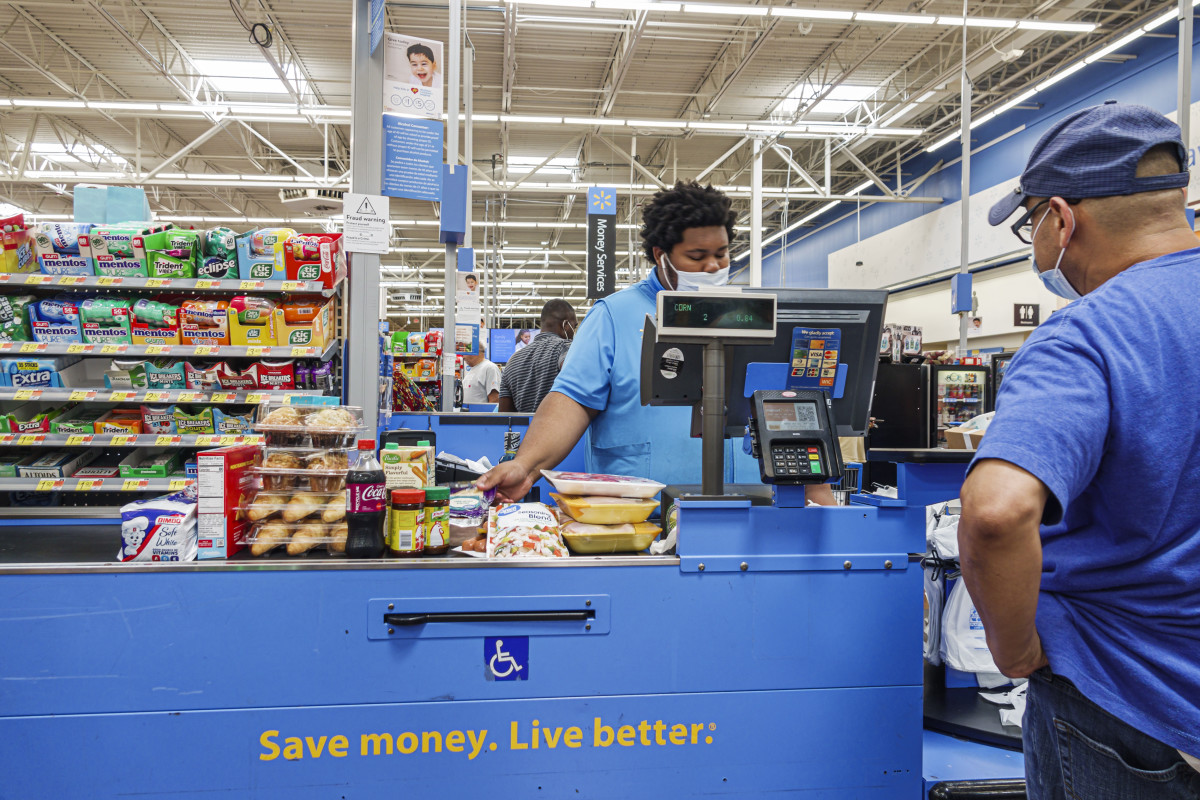
If you've been paying attention to the news recently, you've probably noticed that the retail industry is fighting a public battle on seemingly all fronts.
A sharp consolidation of retailers was brought about thanks to the onset and after effects of the covid pandemic. When things shut down, customers put hobbies and other specialty interests on the back burner in favor of staying home.
Related: Amazon fixes a shopping problem for rival retailers
Many still carried on with their hobbies, like crafts, pets, and home improvement, but a lot of those supplies could be procured online for either a fraction of the cost or effort.
That meant stores that catered to those interests, like Joann Fabrics, Bed Bath & Beyond, Party City, and Petco are still reeling from a pullback in post pandemic spending and declining foot traffic.
Instead, some of the larger retailers, like Walmart (WMT) , Target (TGT) , and Amazon (AMZN) , have made up more than their share of ground. Already strong before covid and poised well financially to both scale up online operations and gobble up empty lots of brick and mortar space, the retail giants have enjoyed soaring success in the past four years.
Walmart struggles with common retail issue
But it hasn't all been easy for the retail giants. A drop off in the work force meant they suddenly had fewer employees to carry out essential operations duties, like manning the check out lines and assisting customers with returns and other questions.

Plus, an uptick in inventory shrink, or the retail term for loss of inventory due in part to theft, hit highs across the United States. Operating with a skeleton staff of already overworked retail employees, plus an increasingly dangerous work environment, meant retailers had to get creative and cut corners somewhere.
This often came in the form of self-checkout kiosks. Most retail giants had some form of self-service before the pandemic, but after shopping in person at superstores came roaring back to life, understaffed stores couldn't keep up with the crush of customers. So many scaled up their self-checkout capabilities, offering customers the opportunity to scan their own items and save time waiting in line.
But self-checkout is a slippery slope. Sure, it frees up employees to focus on other essential duties, but the kiosks aren't exactly foolproof, and soon customers were both purposefully and accidentally forgetting to ring up their items. This obviously led to an uptick in shrink, and many customers grew frustrated with the cumbersome process.
Target began limiting self-checkout to 10 items or fewer. And recently, Walmart has begun updating its self-checkout policy in some key cities.
Walmart closing some self-checkouts
At least two Walmart locations as of April 17 will shutter their self-checkout capabilities in an effort to mitigate the growing frustration.
"We believe the change will improve the in-store shopping experience and give our associates the chance to provide more personalized and efficient service," Walmart spokesperson Brian Little said.
The two store locations affected are:
- Cleveland Steelyard: Cleveland, OH
- St. Louis-area Supercenter, St. Louis, MO
Walmart says the self-checkout kiosks will be removed outside of normal store operation hours and will officially be gone within the next several weeks. In 2023, three Walmart stores removed their self-checkout kiosks in New Mexico for similar reasons.
Still, Walmart has plenty of self-checkout kiosks across its nearly 5,000 stores in the U.S. and says it has no plans to make such reductions on a nationwide scale.







